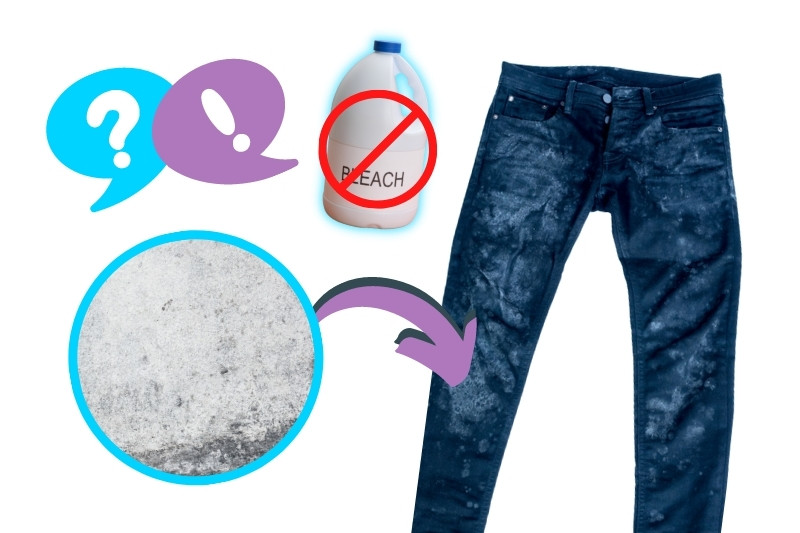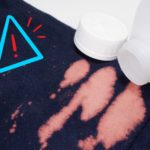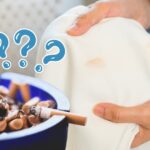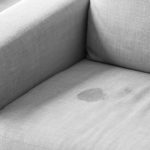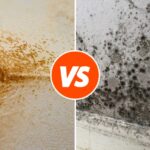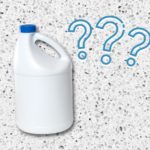Mildew is a ghastly little visitor that likes to set up home on various fabrics around the house! It’s really not appealing to look at, it can even ruin fabric items, it smells and it can cause health issues in more serious cases.
With this in mind, it’s better to act as fast as you can to remove the mildew that’s causing havoc in your house once and for all! Find out how to remove mildew from fabrics without bleach below.
How to Remove Mildew from Clothing Without Using Bleach
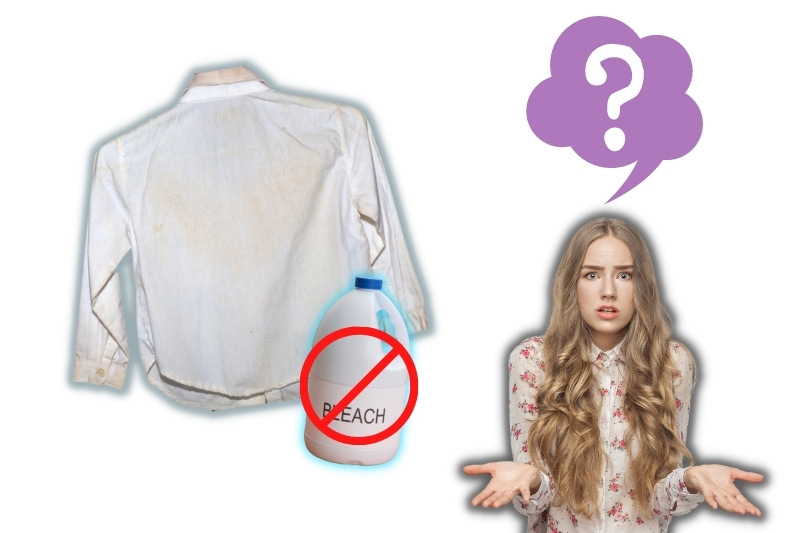
If your clothes are unlucky and get plagued by mildew, the best thing for you to do is to treat and remove the fungus from your garments. You should try and do this as quickly as possible, so that you can prevent your items from getting ruined.
Find out how to remove mildew from clothing below.
What you need
- Hot water
- Borax substitute (a non-bleach-based detergent would also work)
- Bucket
- Toothbrush
- Washing machine
- Cup
Steps to follow to remove the mildew
- If you manage to catch the mildew in time, you may be able to wash your garments as usual in the washing machine (using a non-bleach-based detergent). However, if your clothes have been exposed to mildew for a longer period of time you should continue to follow the steps below.
- You will need to gather your supplies – Borax substitute, hot water, gloves, eye protection and a bucket.
- Remove kids and pets from the room you are working in and open a window for ventilation.
- Pop your safety gear on.
- Add one cup of Borax substitute to the bucket.
- Add one litre of hot water to the bucket
- You should always add one cup of Borax substitute to one litre of water – if you need to fill the bucket up more, do so following this advice.
- You should do a patch test on your item of clothing before you soak the whole garment in the bucket – add a couple of droplets to the fabric to see what happens.
- Continue with this method if you don’t see any major side effects.
- Pop your entire item in the bucket – it’s better to do one item at a time.
- All of the item needs to be covered in water – use an old spoon to move the garment around in the water, and use a heavy object to hold the item under the water.
- Wait about five to ten minutes.
- Pull your garment out of the water and remove the excess water.
- Turn your item inside-out (you should be looking at the back of the mildew stain) – doing this will stop the item from suffering too much damage later on.
- Cover the back of the mildew stain in some non-bleach based detergent (the one you typically wash your clothes with).
- With a soft toothbrush start rubbing gently at the mildew.
- Once you’ve completed the steps above you can proceed to washing your item in the washing machine as normal – always check clothing tags beforehand.
- If your item can handle high temperatures, you should consider washing the item on the highest heat setting and for the longest period of time.
- When the washing machine has finished you can hang your items out on the line to dry naturally – avoid tumble drying as this may cause the mildew stain to embed itself even more so in the fibres of your clothes.
- You may notice that some mildew is still present, in this case you should repeat the steps above.
Additional information: This method is also suitable for removing mildew from bedding and towels!
Note: Not all items of clothing can be washed in warm water, so if this is the case for your garment, allow the water to cool down before treating your items.
Removing Mildew from Mats and Carpets Without Using Bleach

It’s not unusual for carpets and mats to become troubled with mildew. It just so happens that you can treat these pesky patches of mildew very quickly and cheaply on carpets!
What you need
- Protective wear – mask and eye protection
- Brush
- Hoover
- Bowl
- Warm water
- Washing up liquid
- Cloths
Steps to follow to remove the mildew
- Pop your protective gear on – eyewear and a mask.
- Open the doors and windows to ensure that there is sufficient ventilation.
- Grab a brush and start brushing the carpet – take your time doing this.
- Then repeat this process, only this time to hoover your carpet.
- Keep in mind that you don’t want to over-brush/hoover your carpet because you may damage/ruin the fibres.
- Fill a bowl up with hot soapy water – washing up liquid will do.
- Pop a cloth into the bowl and allow it to soak in the water.
- Remove the excess water from the cloth when you pull it out of the bowl.
- Blot at the mildew on the carpet.
- You do not need to over saturate the carpet in water.
- Continue to blot at the mildew patch – remember to rinse your cloth, so you don’t just reapply the dirt you’ve just removed from the carpet.
- Consider hoovering the carpet again to remove even more mildew – this may also remove additional moisture.
- Allow the carpet to dry – if you have a dehumidifier in your home you should make use of it, if not, don’t worry too much but just give your carpet ample time to dry.
- If you’ve removed mildew from a mat you can pop it outside to dry naturally – the sunlight will help to remove the mildew.
- As an optional extra, you could then wash your carpet with carpet shampoo to make sure that the mildew has definitely gone.
Note: In some cases, a carpet may become overrun with mildew, if this is the case for you, you should think about calling in professional help to clean away this mildew. Alternatively, you could remove the entire carpet.
In addition to this, if you have a mildew problem on your carpet, you should consider the extent of this problem. For example, has the issue spread below the carpet and onto the floorboards? If this is the case the issue needs to be dealt with appropriately.
Removing Mildew from Fabric Upholstery Without Using Bleach
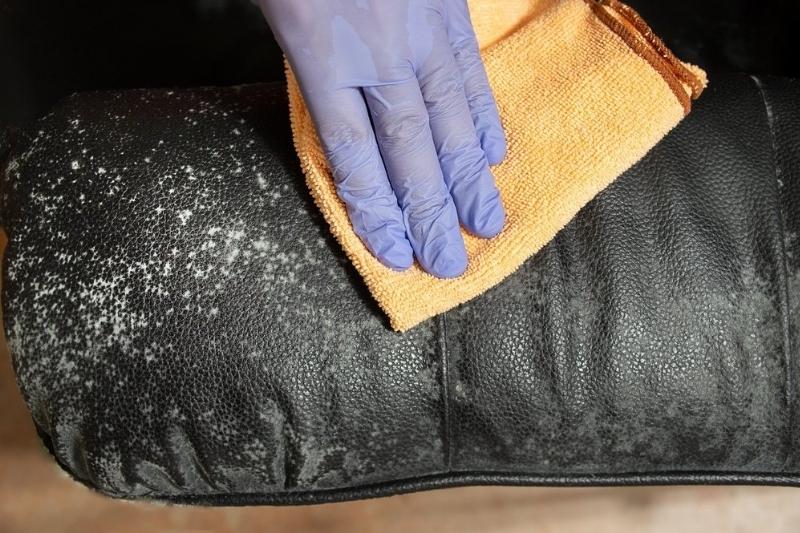
If you’ve got some mildew growing on a sofa, for example, you need to act fast to remove the problem before it starts spreading around your entire settee.
However, treating a sofa, and other large upholstered items in the house, can be a little trickier because they’re usually much bigger than clothes, so you’ve got to remove the mildew in a different way.
Find out how you get rid of mildew from fabric upholstery below.
What you need
- Safety gear – mask and eyewear
- Hoover and its attachments
- Rubbing alcohol
- Warm water
- Bowl
- Spoon
- Cup
- Cloths
- Kitchen roll
Steps to follow to remove the mildew
- Open plenty of windows to get the air flowing in the room.
- Move the piece of upholstery out and into the centre of the room you’re working in, so you have plenty of space to work in – for example, move a sofa into the middle of the living room.
- Pop your safety gear on – eyewear and mask.
- Start by hoovering your fabric upholstery – do this by using the various attachments that came with your hoover.
- Make sure that you’ve hoovered your upholstery as much as possible before continuing with this method.
- Prepare your cleaning products and tools next – big bowl, rubbing alcohol, warm water and cloths.
- Pop one cup of rubbing alcohol into the bowl.
- Pop one cup of warm water into the bowl.
- Mix the products around with an old wooden spoon.
- Soak the cloth in the mixture.
- Remove the excess water from the cloth when you remove it from the bowl – the cloth should be damp.
- Do a patch test before you continue with this method (wait at least 15 minutes to see if any side effects appear). If all works out well, continue.
- Go over to the mildew patch and blott at it with the damp cloth – cover the entire area in the solution you have created.
- The upholstery should be damp but not saturated in water.
- Wait half an hour.
- Clean out your bowl and refill it with warm water.
- Get a new clean cloth and saturate it in the water.
- Remove the excess water from the cloth.
- Blot at the mildew area with the damp cloth.
- Blot at the area with kitchen roll to remove any excess moisture from the upholstery.
- Leave the upholstery to dry naturally – do not sit or touch the item as it dries naturally.
- Repeat the steps above if you still see some mildew patches.
Note: In some cases where mildew has become completely untreatable by you, the best option may be to call in professional help to help you clean the mildew away. Or in extreme cases, it may be better to throw away your item.
Removing Mildew from Fabrics Using Lemon and Salt

If you’d prefer to try out a more natural based method to remove mildew from your fabric items, you can try out the lemon and salt method.
This is a really simple method that can be used on most fabrics, but you should always do a patch test nonetheless.
You can use this method to treat mildew stains on clothes, towels, bedding, carpets and even furniture.
What you need to do
- In a bowl collect the juice of one squeezed lemon.
- Add salt to the bowl sparingly.
- You need to create a paste from the two ingredients.
- Once a paste has formed, grab a cloth and soak up the mixture.
- Go to the mildew patch on your fabric item and blot at it with the cloth.
- Continue to do this until the area is covered.
- You then need to use a soft toothbrush to massage the mixture into the fabric.
- Grab a new damp cloth that has been soaked in just warm water.
- Remove the water from this cloth and start blotting at the treated area.
- Continue to do this until the entire patch is free from any product.
- Wash the item in the washing machine, if possible, or allow the fabric to dry naturally.
Removing Mildew from Fabrics Using White Vinegar and Bicarbonate of Soda
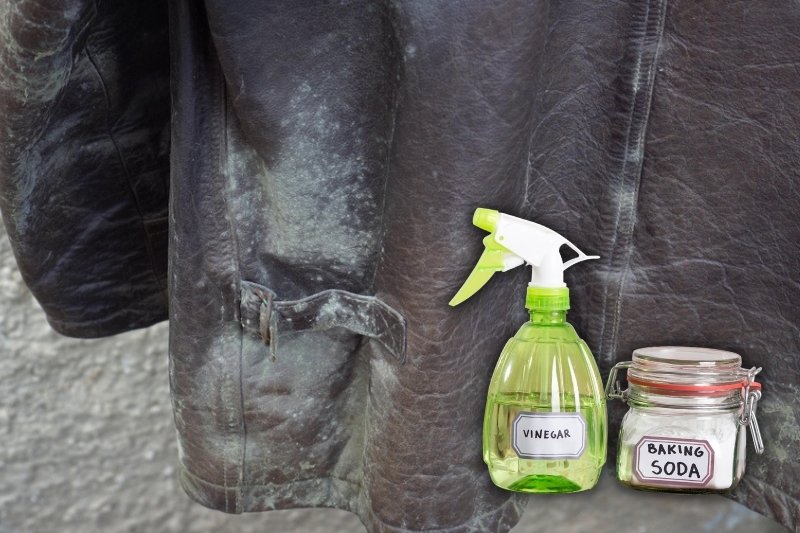
If you need a natural mildew remover that packs a little more punch, look no further than white vinegar and bicarbonate of soda.
Both natural ingredients are fairly harmless, yet they’re incredibly strong cleaning agents that can tackle the most difficult of marks.
You can use this method to treat mildew stains on clothes, towels, bedding, blinds, carpets and even furniture. Just remember to do a patch test before you dive right into the treatment phase.
What you need to do
- In a bowl mix one cup of white vinegar with one cup of warm water.
- Pop a clean cloth into the bowl so it becomes saturated in the mixture.
- Remove excess moisture from this cloth.
- Go over to the infected area and start blotting at it with the damp cloth.
- Continue to do this until you’ve covered the whole mildew riddled patch.
- Wait about ten minutes.
- Grab your bicarbonate of soda and start pouring it over the treated area – pop a towel down on the floor to catch any mess.
- Wait a further ten minutes.
- Grab another clean damp cloth and start blotting at the area.
- Pick up as much excess product as you can.
- Wash the item in the washing machine if possible, or allow the item to air dry naturally after hoovering it.
Removing Mildew from Fabrics Using Specialised Cleaners
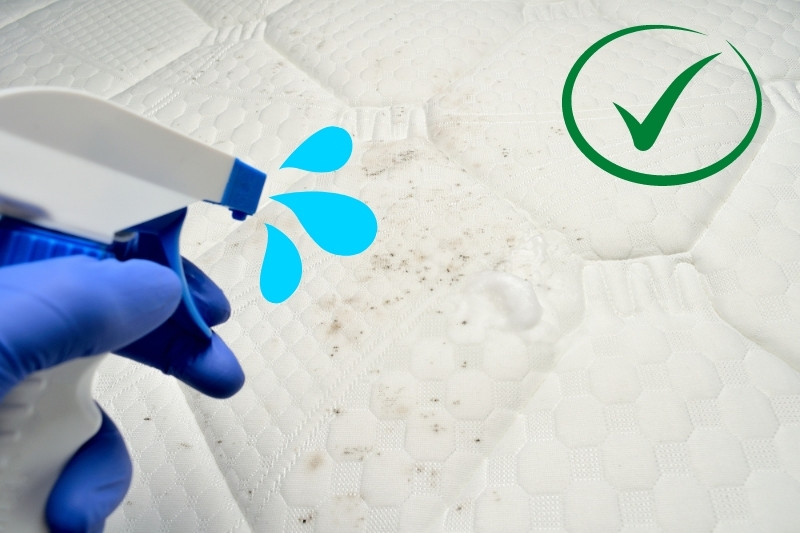
If you’d rather use a specialised product to get rid of your mildew problem you can do so! There are multiple items that you can buy today that can help reduce and eradicate mildew from fabrics.
You can pick most of these goods up from stores like B&Q, Wilko, The Range and most supermarkets.
However, before you pop out to buy something, keep in mind that you need to buy a product that is suitable for the task in hand, is bleach free and is family friendly. And ideally, more than anything else, you should pick a specialised product that is really simple to use and doesn’t take an age to work with.
Mildew can be an infuriating problem to deal with, and the last thing you need to do is to buy a product that is hard to work with. Keep it simple.
How to Prevent Mildew from Returning to Fabric Items

Once you’ve eradicated the unsightly mildew from your fabric items, the last thing you want to see is the unwelcome guest returning. So, to prevent further mildew-related problems, follow this advice:
- Don’t just leave your clothes in the washing machine when the cycle has finished, pull them out and dry them. (Either way will do – line or tumble dryer).
- Don’t leave wet items hanging around your home, wash them and dry them appropriately. (For example, dry your wet towel after taking a shower).
- Make sure your clothes are actually dry before storing them.
- Don’t sit on wet furniture or walk on damp carpets, allow them to dry thoroughly before interacting with them.

Bethan has a passion for exploring, reading, cooking and gardening! When she’s not creating culinary delights for her family, she’s concocting potions to keep her house clean!
